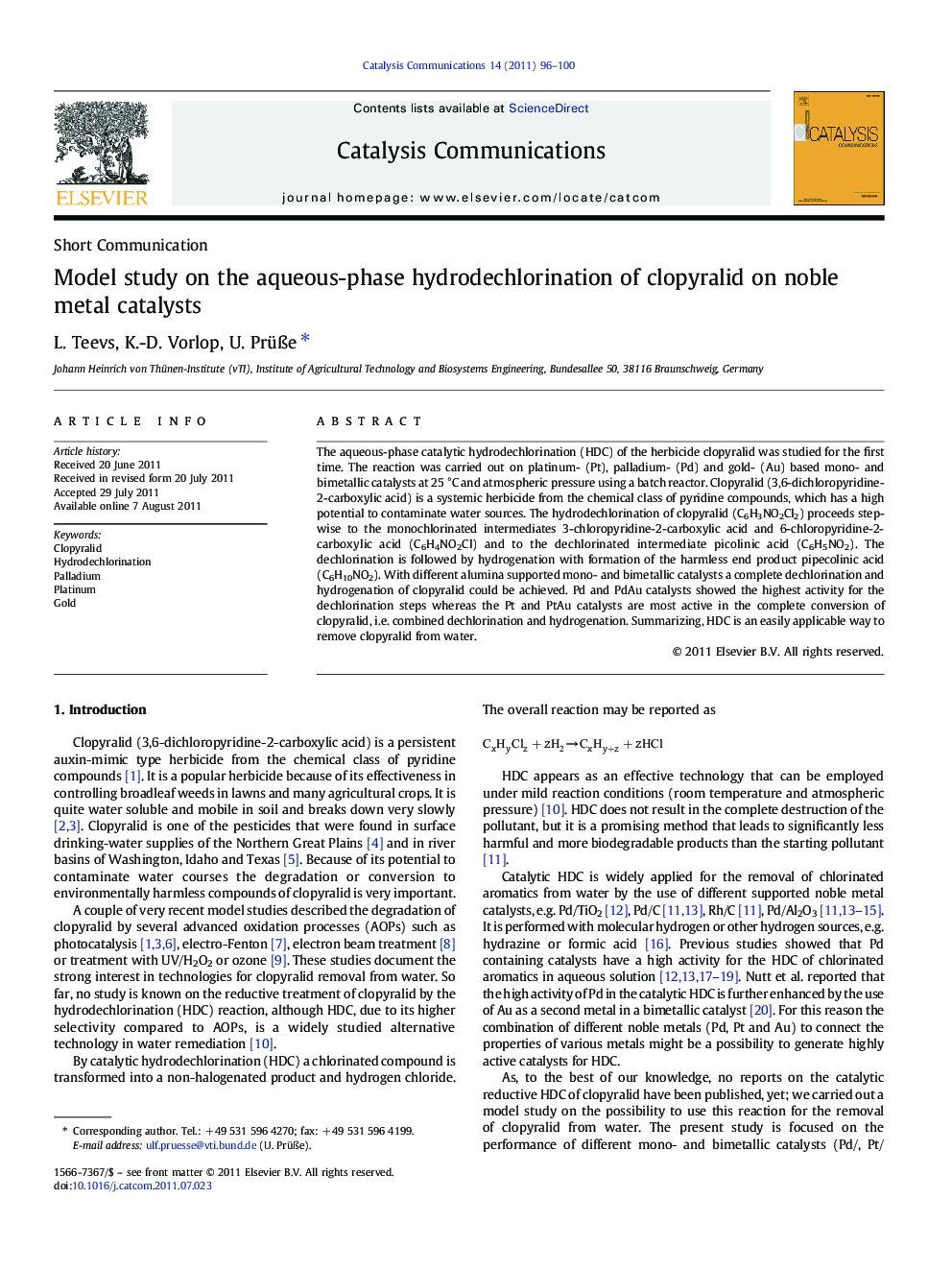| Article ID | Journal | Published Year | Pages | File Type |
|---|---|---|---|---|
| 51725 | Catalysis Communications | 2011 | 5 Pages |
The aqueous-phase catalytic hydrodechlorination (HDC) of the herbicide clopyralid was studied for the first time. The reaction was carried out on platinum- (Pt), palladium- (Pd) and gold- (Au) based mono- and bimetallic catalysts at 25 °C and atmospheric pressure using a batch reactor. Clopyralid (3,6-dichloropyridine-2-carboxylic acid) is a systemic herbicide from the chemical class of pyridine compounds, which has a high potential to contaminate water sources. The hydrodechlorination of clopyralid (C6H3NO2Cl2) proceeds step-wise to the monochlorinated intermediates 3-chloropyridine-2-carboxylic acid and 6-chloropyridine-2-carboxylic acid (C6H4NO2Cl) and to the dechlorinated intermediate picolinic acid (C6H5NO2). The dechlorination is followed by hydrogenation with formation of the harmless end product pipecolinic acid (C6H10NO2). With different alumina supported mono- and bimetallic catalysts a complete dechlorination and hydrogenation of clopyralid could be achieved. Pd and PdAu catalysts showed the highest activity for the dechlorination steps whereas the Pt and PtAu catalysts are most active in the complete conversion of clopyralid, i.e. combined dechlorination and hydrogenation. Summarizing, HDC is an easily applicable way to remove clopyralid from water.
► First study on the degradation of clopyralid by catalytic hydrodechlorination. ► Pd, Pt, Au mono- and bimetallic catalysts were tested. ► Degradation via dechlorination and subsequent hydrogenation to pipecolinic acid. ► PtAu catalysts are most active for dechlorination and subsequent hydrogenation.
